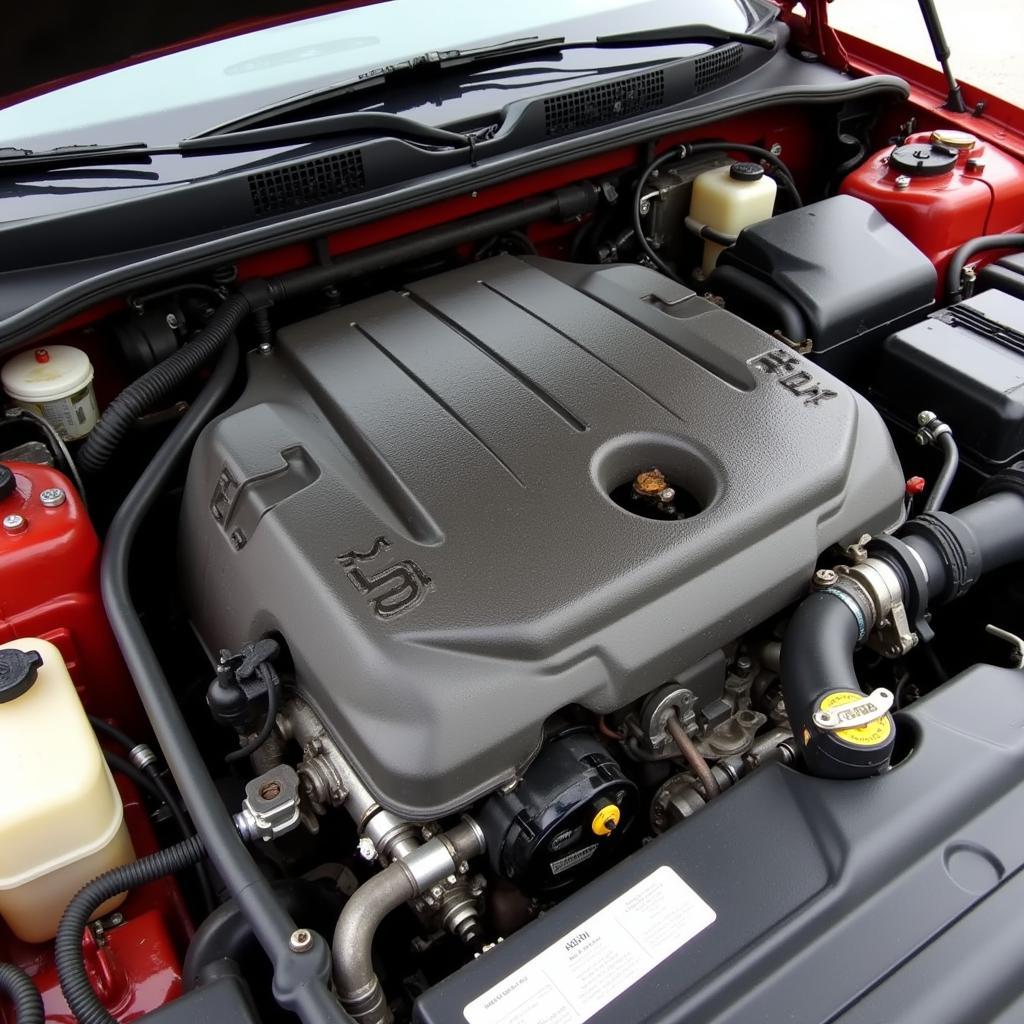Is Flood Damage Car Repairable? The answer isn’t a simple yes or no. While some flood-damaged vehicles can be salvaged, others are a total loss. Determining whether a car is worth repairing after a flood depends on several factors, including the depth and duration of the flood, the type of water (fresh or saltwater), and the extent of damage to the vehicle’s mechanical and electrical systems. This comprehensive guide will help you navigate the complexities of assessing flood-damaged vehicles and making informed decisions.
Understanding the Extent of Flood Damage
The repairability of a flood-damaged car largely hinges on how high the water reached. Water levels below the dashboard typically cause less severe damage, primarily affecting carpets, upholstery, and lower door panels. These components can often be replaced, and the vehicle can be restored with proper cleaning and drying. However, floodwater reaching the dashboard or higher usually signifies more extensive damage, impacting crucial electrical components, the engine, and transmission. In such cases, the repair costs can be substantial and may exceed the car’s actual value.
Fresh Water vs. Saltwater Damage
The type of water also plays a crucial role. Freshwater flooding is generally less destructive than saltwater flooding. Saltwater is highly corrosive and can quickly damage metal components, wiring, and electronic systems, leading to long-term issues like rust and electrical malfunctions. Even after thorough cleaning, salt residue can linger, causing ongoing corrosion and making a full recovery difficult.
 Flood Damaged Car Interior
Flood Damaged Car Interior
Assessing the Mechanical and Electrical Damage
A thorough mechanical and electrical inspection is critical when evaluating a flood-damaged car. The engine, transmission, and other vital mechanical components should be checked for water intrusion and potential damage. Electrical systems are particularly vulnerable to flood damage, and even seemingly minor issues can lead to significant problems down the line. Corrosion in wiring harnesses, connectors, and electronic control units can cause intermittent electrical failures, making the vehicle unreliable and potentially dangerous.
Hidden Damage: The Long-Term Effects of Flooding
Flood damage isn’t always immediately apparent. Hidden damage, such as mold growth within the vehicle’s interior or corrosion within electrical systems, can manifest weeks or even months after the initial flood. This delayed damage can lead to costly repairs and health hazards.
“When inspecting a flood-damaged car, don’t just focus on the visible damage,” advises John Miller, a certified automotive technician with over 20 years of experience. “Pay close attention to the smell, look for signs of mold or mildew, and thoroughly inspect the electrical system for any signs of corrosion or water intrusion.”
 Flood Damaged Car Engine
Flood Damaged Car Engine
Is it Worth Repairing? Weighing the Costs and Risks
Determining whether a flood-damaged car is worth repairing involves a careful cost-benefit analysis. Consider the vehicle’s pre-flood value, the estimated repair costs, and the potential for long-term issues. If the repair costs approach or exceed the car’s value, it’s likely not financially viable to pursue repairs. Moreover, even if repaired, a flood-damaged car often carries a stigma, affecting its resale value.
Insurance and Title Branding: Understanding the Implications
Insurance companies typically declare vehicles submerged above the dashboard a total loss. These vehicles are often branded with a “flood” or “salvage” title, which significantly impacts their resale value and can make it difficult to obtain insurance in the future.
“A flood title is a permanent mark on a vehicle’s history,” explains Sarah Johnson, an insurance claims adjuster with over 15 years of experience. “It serves as a warning to potential buyers that the car has suffered significant water damage, and it can greatly diminish its market value.”
Conclusion: Making an Informed Decision about Flood Damaged Cars
Is flood damage car repairable? Ultimately, the decision rests on a thorough assessment of the damage, a realistic estimation of repair costs, and a careful consideration of the long-term risks. While some flood-damaged cars can be successfully restored, others are best avoided. By understanding the complexities of flood damage, you can make an informed decision that protects your investment and ensures your safety.
FAQ
- Can a flooded car be repaired? Sometimes, but it depends on the extent of the damage.
- What are the signs of flood damage in a car? Musty smell, water stains, rust, and electrical problems.
- Does car insurance cover flood damage? Usually, if you have comprehensive coverage.
- How do I know if a car has a flood title? Check the vehicle history report.
- Should I buy a flood-damaged car? Proceed with extreme caution and have it thoroughly inspected.
- What is the long-term impact of flood damage on a car? Rust, corrosion, and electrical issues can arise over time.
- How can I protect my car from flood damage? Park in elevated areas and avoid driving through flooded roads.
Need assistance? Contact us via WhatsApp: +1(641)206-8880, Email: [email protected]. Our customer service team is available 24/7.

Leave a Reply